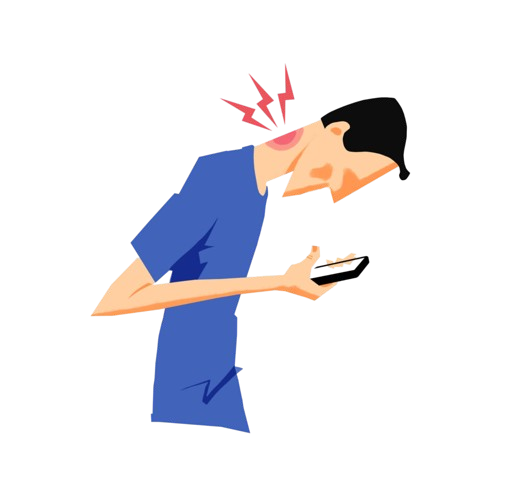Occipital Neuralgia
Occipital Neuralgia
Occipital neuralgia is a type of headache caused by irritation or damage to the occipital nerves, which are located at the back of the head and neck. These nerves, specifically the greater occipital nerve and lesser occipital nerve, provide sensation to the scalp and the back of the head.
Characteristics
- Pain Quality: Sharp, stabbing, or electric shock-like pain.
- Pain Location: Typically felt at the back of the head and upper neck, often radiating to the scalp.
- Onset: Can be sudden or gradual, often beginning with a sharp pain that may become a constant ache.
- Duration: Pain episodes can last from a few minutes to several hours and may be recurrent.
Causes
The exact cause of occipital neuralgia can vary but may include:
- Nerve Compression: From surrounding structures, such as muscles, bones, or blood vessels.
- Trauma: Injury to the head or neck, such as whiplash.
- Inflammation: Conditions like arthritis or infections affecting the occipital nerves.
- Tension or Muscle Spasms: In the neck and upper back.
- Structural Abnormalities: Such as tumors or cysts compressing the occipital nerves.
- Chronic Conditions: Conditions like diabetes or multiple sclerosis.
Diagnosis
Diagnosis typically involves:
- Medical History and Symptom Description: Detailed account of pain characteristics and triggers.
- Physical Examination: Assessing tenderness, pain areas, and neurological function.
- Imaging Studies: MRI or CT scans to rule out other potential causes of nerve compression or injury.
- Nerve Block: Diagnostic nerve blocks may be performed to confirm the involvement of the occipital nerves.
Prevention
Preventive measures include:
- Proper Posture: Maintaining good posture to avoid strain on the neck and upper back.
- Ergonomic Adjustments: Ensuring workspaces and activities are set up to minimize neck strain.
- Regular Exercise: Strengthening and stretching exercises to improve neck muscle flexibility and strength.
- Managing Underlying Conditions: Proper management of chronic conditions that may contribute to nerve irritation.
Effective management of occipital neuralgia often involves a combination of medical treatments, physical therapy, and lifestyle adjustments to relieve pain and address any contributing factors.

What are the signs and symptoms of Occipital Neuralgia?
With Occipital Neuralgia, the affected areas correspond to those innervated by the greater and lesser occipital nerves. These nerves relay sensation and pain information from the back of the head to the brain. Consequently, all sensations in the back of the head, neck, and ears are transmitted to the brain via the occipital nerves.
Individuals with Occipital Neuralgia often exhibit extreme hypersensitivity, where even slight stimuli, such as touching the neck or back of the head, can trigger painful attacks. These attacks can last from seconds to minutes.
The sensations experienced during these attacks can include:
- Sharp jabs
- Electric shock-like pain
- Chronic pain in the upper neck, back of the head, and behind the ears
It is common for sufferers to remain undiagnosed or misdiagnosed for extended periods, as the symptoms can resemble those of Migraine Headaches. A key differentiator between Occipital Neuralgia and Migraine is the duration of the pain episodes.
- Need Assistance?
(07) 5619-5588
Everything You Need to Know About Occipital Neuralgia
The Occipital Nerve consists of a group of nerves originating between the second and third cervical vertebrae (C2/C3). These nerves interact with each other in several ways.
- The Greater Occipital Nerve innervates the semispinalis capitis muscle and the scalp.
- The Lesser Occipital Nerve innervates the scalp and the area behind the ears.
- The Third Occipital Nerve, also known as the Least Occipital Nerve, innervates the semispinalis capitis muscle, a small area below the base of the skull, and the C2/C3 zygapophyseal joints.
- Irritation of the C1/C2 nerve roots by an abnormal branch of the posterior inferior cerebellar artery
- Dural arteriovenous fistula at the cervical level
- Bleeding from bulbocervical cavernomas
- Cervical intramedullary cavernous hemangioma
- Giant cell arteritis
- Fenestrated vertebral artery pressing on C1/C2 nerve roots
- Abnormal course of the vertebral artery
- Schwannoma at the craniocervical junction: specifically, schwannoma of the occipital nerve
- C2 myelitis
- Multiple sclerosis
- Arthrosis of C1/C2, atlantodental sclerosis
- Hypermobile posterior arch of C1
- Cervical osteochondroma
- Osteolytic lesion of the cranium
- Excessive callus formation after a C1/C2 fracture
How MoveSense will help you treat the Occiptial Neuralgia?
Occipital Neuralgia sufferers have tried various methods to alleviate chronic headaches and painful attacks. While some treatments can reduce symptoms, many still experience pain despite these options. Additionally, certain surgical treatments may carry the risk of permanent scalp numbness.
If you’ve tried everything without success, have you had your neck or brainstem evaluated to investigate the root cause of your symptoms instead of just masking them?
At MoveSense, we have treated numerous Occipital Neuralgia sufferers using advanced techniques to determine if the neck and brainstem are the underlying issues. We start with a thorough examination of the upper cervical spine to assess the severity of your sensitized brainstem.
Once treatment begins, we expect significant improvement in 90% of our Occipital Neuralgia patients within the first five treatment sessions.
If you suffer from Occipital Neuralgia or if your symptoms persist despite medication, we recommend a comprehensive examination of your neck and brainstem.

Varun Gautam
Headache and migraine specialist Physiotherapist
